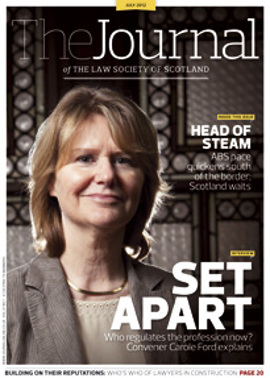Married to the land? – appealed

A recent Inner House judgment, Jack v Jack [2016] CSIH 75 (14 October 2016) provides a useful restatement of the application of partnership law in divorce cases in the context of farming. As any family lawyer who advises farmers and their spouses will know, issues commonly arise over the transfer of land and the use of family partnerships as a business vehicle.
Facts and issues
Mr and Mrs Jack had been married for 40 years; he had worked on the family farm all his life. In April 1997, on his father’s retirement, Mr Jack formed a partnership to run the farm with his mother. Later that year, Mr Jack senior transferred title to the main farmlands to his son for love, favour and affection, and also made a substantial loan to the partnership – in effect gifting his interest. In 2005, Mr Jack senior instructed his accountants to treat this loan as a gift to his son, and in 2006, Mrs Jack was assumed as a partner (the mother having retired). The parties remained partners at the relevant date.
In the Outer House ([2015] CSOH 91; see also “Married to the land?”, Journal, August 2015, 36), two primary contentions were advanced for Mrs Jack: that the land was partnership property, and that the transfer of the loan should not be treated as a gift (and thus its value was matrimonial property). Neither proposition was accepted, and Mrs Jack reclaimed against the resulting award of financial provision. The Inner House refused the appeal.
Was the land partnership property?
Most of the argument before the Inner House focused on the first issue. On the basis of s 20 of the Partnership Act 1890, the reclaimer argued that because the land had been “acquired on account of
the firm, or for the purposes and in the course of its business” (para 16), it was partnership property.
The Inner House analysed the partnership’s relationship to the land when it was formed in 1997. It concluded that there had been “an informal licence at will” (para 18), in which the firm occupied the land but did not acquire an ownership or beneficial interest. As in the court below, emphasis was placed on the “highly significant” terms of the disposition to Mr Jack, which indicated a gratuitous transfer, and the fact that the land was never shown as an asset on the partnership balance sheet (the argument that this was solely for “tax reasons” was rejected).
The court was also not persuaded that Mr Jack senior had intended to create an implied trust for benefit of the partnership. Indeed, the inference to be drawn from his actions was that he had intended the land to remain his property at the time the partnership was formed. No weight was to be placed on the occupation and use of the land by the partnership, which was a commonplace arrangement.
Accordingly, since the land had not been partnership property when the partnership was formed in April 1997, it was also not such in October 1997 when gratuitously transferred to the respondent. It therefore remained his property and Mrs Jack had no claim on its value.
Requirements for assignation
The court also considered the status of the respondent’s gifted interest in the partnership. The reclaimer argued that Mr Jack senior’s instruction to his accountant to transfer his loan to the respondent did not meet the requirements for an assignation, and so the interest had not been transferred. On the basis of Carter v McIntosh (1862) 24 D 925, the court held that the instruction to the accountant would, once carried out, clearly result in the transfer of the debt from father to son. As the accountants were agents for the partnership, which was the debtor, the requirement of intimation had also been met. The interest in the loan was therefore a gift and so, again, Mrs Jack had no claim on this element of the value of the partnership.
The decision is of interest not just to family practitioners but also to those advising farmers on the structuring of land and business transactions. While the prospect of relationship breakdown may rarely figure in such discussions, clarity in these arrangements will assist in the event of separation.
In this issue
- Insider lists: the new must-do
- Pensions valuation and the “relevant date”
- Data: blurring the lines between privacy and risk?
- IT: the proficiency and the gaps
- Reading for pleasure
- Opinion: Peter Boyd
- Book reviews
- Profile
- President's column
- The Keeper steps in
- People on the move
- Beyond Yes and No: Britain after Brexit
- Brexit: leaving European judicial space
- Timed out? Alternative financial claims by cohabitants
- The end of the cash ISA?
- We need to talk about Beatrice
- Global players
- Digital: the dark side
- Cautionary tale
- Married to the land? – appealed
- Pregnancy: the unequal burden
- Privacy: strictures and safeguards
- Trapped employers – relief any time soon?
- Scottish Solicitors' Discipline Tribunal
- Convenient, but necessary?
- Is there a lawyer in the house?
- From the Brussels Office
- Law reform roundup
- Master Policy: the new team moves in
- The "buzz" of mediation
- Plan into action
- Sorry: the hardest word, made easier
- Ask Ash
- Appraising: what's your score?
- Paralegal pointers






